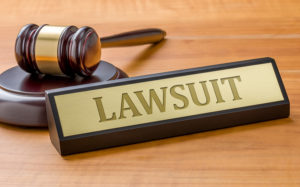 As Americans, we have the good fortune to live in a society where we can turn to the courts for compensation when others inflict harm on us. Rather than resorting to violence or simply accepting our fates, we can right the wrongs done to us by suing for money damages. It is a remarkable feature of our lives that seldom gets appreciated for the profound and largely positive influence it has on our collective sense of security and community.
As Americans, we have the good fortune to live in a society where we can turn to the courts for compensation when others inflict harm on us. Rather than resorting to violence or simply accepting our fates, we can right the wrongs done to us by suing for money damages. It is a remarkable feature of our lives that seldom gets appreciated for the profound and largely positive influence it has on our collective sense of security and community.
With the help of an experienced personal injury lawyer, anyone can hold an individual, corporation, institution, or government entity—no matter how large and powerful—accountable for wrongful conduct that results in personal injuries and losses. Let’s take a look at how the system works.
Monetary Damages: An Imperfect But Effective Tool
The first thing to understand about suing for damages when someone causes you a personal injury is that, by and large, money constitutes the primary remedy for any kind of harm done to you. Sometimes, you may have the option of seeking other kinds of relief from a court; such as, for example, a court order directing the party who harmed you to take specific actions. However, most of the time, suing for damages means translating the pain, trauma, and difficulty you suffered into dollars and cents that the wrongdoer should have to pay you as compensation.
It is not a perfect system. Money cannot stop your body from aching. It cannot cure an illness or take away a disability that someone else’s wrongful actions caused. It will never heal the agony of losing a loved one to a fatal accident. It does not even necessarily satisfy the basic human instinct for taking revenge on those who do us harm.
Monetary damages do, however, serve obviously useful purposes. They help pay for care that promotes a person’s physical and emotional healing. They supply the means to purchase equipment or to renovate living spaces to accommodate disabilities. They replace lost income. And, they exact a price for the wrongful behavior that caused your injuries, helping to ensure that those actions do not re-occur and do harm to others.
Types of Damages
Damages come in three basic forms. Here is an overview of each of them.
Compensatory Damages
The most common money damages in a personal injury lawsuit consist of those that compensate you for the harm you suffered, known as compensatory damages.
We separate these damages into two broad categories:
- Economic damages compensate you for the financial or monetary costs you incur because of a personal injury. They include, for example, the cost for your current and future medical care, wages and income you’ve lost or will not earn because of your injuries and any disabilities that flow from them, and any other out-of-pocket expenses you would not have had but for your injuries and the accident or incident that caused them.
- Non-economic damages pay you for all other types of harm you suffer because of a personal injury; the ones that are not directly tied to a financial expenditure, but are no less real in their harmful effect on your life. They may include your physical pain, your emotional suffering, the harm done to your personal/intimate relationships, and the overall diminishment of your quality or enjoyment of life.
Broadly speaking, lawyers speak of compensatory damages in terms of “making you whole.” Of course, that is not entirely accurate because, as we said, money does not literally replace your health, bodily functions, or the life of a loved one. Still, the basic function of compensatory damages is to use the money to return you, as best as possible, to your position before your personal injury. As such, most compensatory damages are not taxable.
Compensatory damages have a long history and tradition in the law. Over centuries, U.S. (and before them, British) courts have explored, explained, categorized, and authorized the types and ranges of compensatory damages you might seek for your injuries.
For the most part, no single law exists that says: “You get compensated for these specific things, and can receive this specific amount of money, in a personal injury case.”
Instead, lawyers, judges, and insurance companies rely on that long history of court decisions in personal injury cases, called the common law, for guidance when it comes to determining what damages you can ask for and obtain in your specific circumstances.
Statutory Damages
Except, that is, when a statute specifically lays out exactly what damages you may seek for the harm you suffered.
Sometimes, legislatures focus their attention on a specific type of harm that people can suffer, or a specific type of harmful action that can cause personal injuries, and devise a law to address them. Often, those laws (or statutes) prescribe specific amounts of damages for people who suffer from a particular injury or wrongful conduct the law seeks to address. We call these statutory damages.
Statutory damages take many forms and seek to serve various purposes. Legislatures may, for example, dictate statutory damages in cases where injured people would otherwise have a difficult time proving the harm they suffered. Or, legislatures may enact laws containing statutory damages to limit the types or sizes of compensatory damages an injured person might receive. Sometimes, statutory damages have a purely punitive purpose (see below). Statutory damages may or may not be taxable, depending on their purpose.
Whatever the case, experienced personal injury lawyers know when and how statutory damages may come into play in a personal injury case. They take the possibility of those damages into account in crafting legal strategies designed to obtain maximum compensation for their clients. In some cases, that means presenting a case in a manner that triggers statutory damages, whereas in others it may mean trying to avoid the application of a statutory damages law because, for example, it caps the amount of money an injured person can receive.
Exemplary/Punitive Damages
The third broad type of damages a personal injury victim may seek to obtain in a lawsuit are called exemplary or punitive damages. Think of these as the opposite of compensatory damages. Instead of making the injured person whole, they punish the party who caused the injury and deter that party, and others, from engaging in harmful conduct in the future.
Courts in California have the authority to award exemplary damages when the injured person’s lawyer proves “by clear and convincing evidence that the defendant has been guilty of oppression, fraud, or malice.”
Let’s unpack what that means under California law.
- Clear and convincing evidence must support a claim for exemplary damages. Normally, an injured person’s lawyer need only prove damages by a preponderance of the evidence—in other words, that the at-fault party caused those damages more likely than not. Proving something by clear and convincing evidence means doing so to an even higher degree of certainty than by a preponderance.
- Oppression “means despicable conduct that subjects a person to cruel and unjust hardship in conscious disregard of that person’s rights.”
- Fraud “means an intentional misrepresentation, deceit, or concealment of a material fact known to the defendant with the intention on the part of the defendant of thereby depriving a person of property or legal rights or otherwise causing injury.”
- Malice “means conduct which is intended by the defendant to cause injury to the plaintiff or despicable conduct which is carried on by the defendant with a willful and conscious disregard of the rights or safety of others.”
In short, to obtain exemplary or punitive damages for your personal injury, your lawyer must show that the at-fault party engaged in the worst kinds of wrongful conduct. That is not an easy task, which is why California courts only award exemplary or punitive damages in the minority of cases. Most punitive damages are taxable.
How to Sue for Damages
Now that we have covered the purpose of damages and types of damages that exist, let’s turn to how the victim of a personal injury sues for them.
Suing, in the vast majority of cases, means filing a lawsuit in a court that has jurisdiction over the accident or incident that led to the personal injury. For example, an experienced personal injury lawyer would normally (although not always) file a lawsuit on behalf of a client injured in a San Diego traffic accident in San Diego County Superior Court or the federal United States District Court for the Southern District of California.
Filing a lawsuit, however, is not simply something you do off-the-cuff. Building and presenting a winning lawsuit takes time, know-how, and resources, which is why personal injury victims should always seek help from an attorney whose law practice focuses on personal injury matters, who has years of experience representing clients in that area, and who can point to a track record of success in similar personal injury cases.
The specific steps lawyers take to build and execute a case for personal injury damages tend to vary based on the particulars of the individual circumstances.
However, in general, they often include:
- Case investigation. A personal injury case consists of facts applied to legal principles, which when combined show that an at-fault party has a liability to the injured party for damages. To prove facts, lawyers need evidence. To obtain evidence, they often must investigate how a client’s injuries happened, and the nature and scope of the injuries the client sustained. Case investigation can involve a wide range of tasks, including visiting accident scenes, combing through records, interviewing witnesses, and retaining experts to dig into the technical details of an accident or medical condition.
- Legal analysis and strategy. With facts in hand, personal injury lawyers evaluate who may owe compensation to their client for damages, and devise a plan for obtaining those damages through legal action. Oftentimes, multiple parties owe damages to a personal injury victim, and it falls to the lawyer to advise the client about how to proceed in a manner that stands the best chance of securing the highest payment possible from one or more of those parties. The lawyer may conclude, for example, that it makes the most sense to file a lawsuit against one party, while simply demanding compensation (without yet filing a lawsuit) from another.
- Preparing and filing a lawsuit. Filing a lawsuit involves presenting documents, known as pleadings, to a court. The pleading that starts a lawsuit is most often called a complaint. The complaint summarizes who the parties are, why the court has jurisdiction to hear their case, the facts that entitle the injured party (known as the plaintiff) to damages, and the legal basis for seeking those damages.
- Discovery. Filing a lawsuit for damages triggers a process known as discovery, in which both sides request information from each other, and from third parties, with the goal of “discovering” the facts relevant to the case. Discovery typically includes collecting, reviewing, and exchanging documents and other records, and conducting interviews with witnesses under oath (known as depositions). Discovery constitutes a powerful tool for injured persons to obtain the evidence they need to prove their case for damages.
- Motion practice. Before and during discovery, the parties may apply to the court for rulings to guide, clarify, narrow, or even end the case. The parties make these applications in filings known as motions. The skilled deployment of motions by a personal injury attorney can strengthen and even accelerate the resolution of a personal injury case.
-

Personal Injury Attorney, John Gomez Settlement negotiation. The vast majority of personal injury lawsuits for damages settle out of court. A settlement is an agreement to resolve a legal claim. In the typical settlement, the injured party receives monetary damages for releasing the at-fault party (and its insurance company) from further liability. Skilled personal injury lawyers have a keen sense of when and how to conduct negotiations to achieve the highest possible settlements for their clients.
- Trial. Personal injury cases that do not settle often proceed to trial, in which lawyers present their evidence and legal arguments to judges and juries. The personal injury lawyer’s aim at trial is to convince the judge or jury to award damages to the injured client.
To learn more about suing for damages in a personal injury matter that has affected your life or that of a loved one, contact an experienced attorney today for a free consultation.







